标签:SpringBoot 配置文件 class name 75 import public 读取
Spring Boot 中读取配置文件有以下 5 种方法:
- 使用 @Value 读取配置文件。
- 使用 @ConfigurationProperties 读取配置文件。
- 使用 Environment 读取配置文件。
- 使用 @PropertySource 读取配置文件。
- 使用原生方式读取配置文件。
它们的具体使用方法如下,为了方便测试,我们在 Spring Boot 配置文件 application.properties 添加以下内容:
profile.name=Spring Boot Profile
profile.desc=Spring Boot Profile Desc.
1.使用 @Value 读取配置文件
使用 @Value 可以读取单个配置项,如下代码所示:
@SpringBootApplication
public class DemoApplication implements InitializingBean {
@Value("${profile.name}")
private String name;
public static void main(String[] args) {
SpringApplication.run(DemoApplication.class, args);
}
@Override
public void afterPropertiesSet() throws Exception {
System.out.println("My Profile Name:" + name);
}
}
以上程序的执行结果如下图所示:
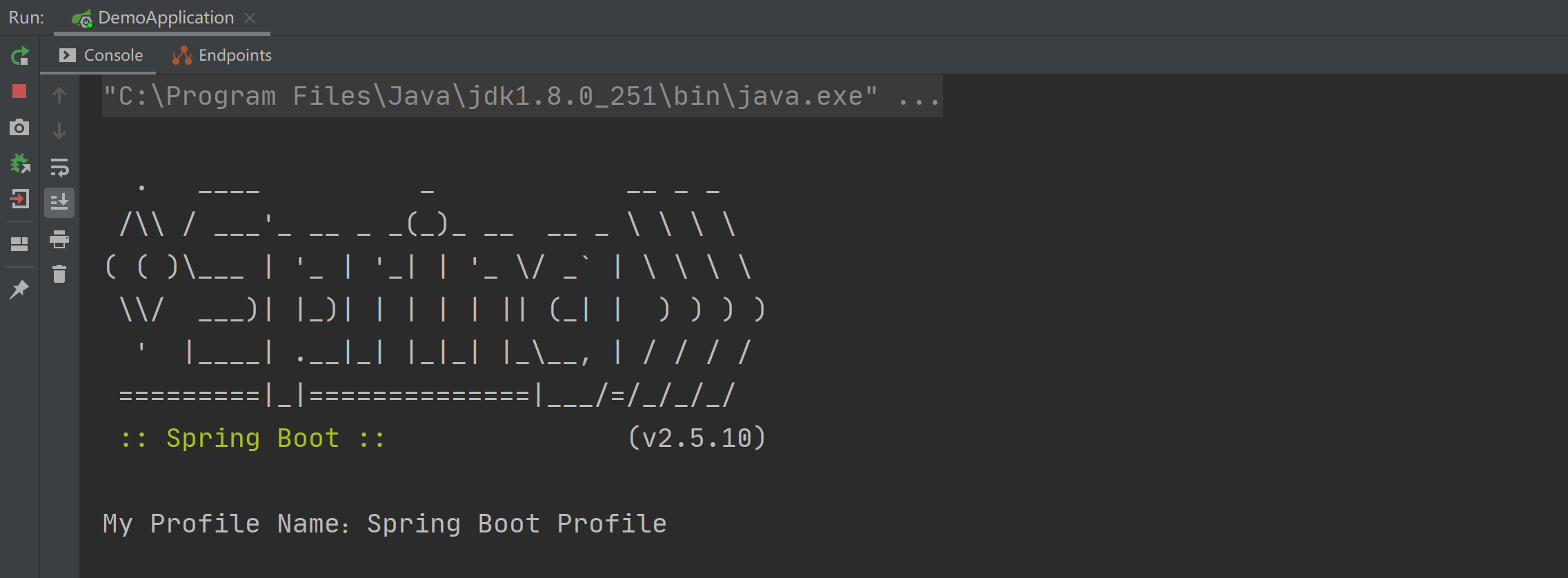
2.使用 @ConfigurationProperties 读取配置文件
@ConfigurationProperties 和 @Value 的使用略微不同,@Value 是读取单个配置项的,而 @ConfigurationProperties 是读取一组配置项的,我们可以使用 @ConfigurationProperties 加实体类读取一组配置项,如下代码所示:
import lombok.Data;
import org.springframework.boot.context.properties.ConfigurationProperties;
import org.springframework.stereotype.Component;
@Component
@ConfigurationProperties(prefix = "profile")
@Data
public class Profile {
private String name;
private String desc;
}
其中 prefix 表示读取一组配置项的根 name,相当于 Java 中的类名,最后再把此配置类,注入到某一个类中就可以使用了,如下代码所示:
@SpringBootApplication
public class DemoApplication implements InitializingBean {
@Autowired
private Profile profile;
public static void main(String[] args) {
SpringApplication.run(DemoApplication.class, args);
}
@Override
public void afterPropertiesSet() throws Exception {
System.out.println("Profile Object:" + profile);
}
}
以上程序的执行结果如下图所示:
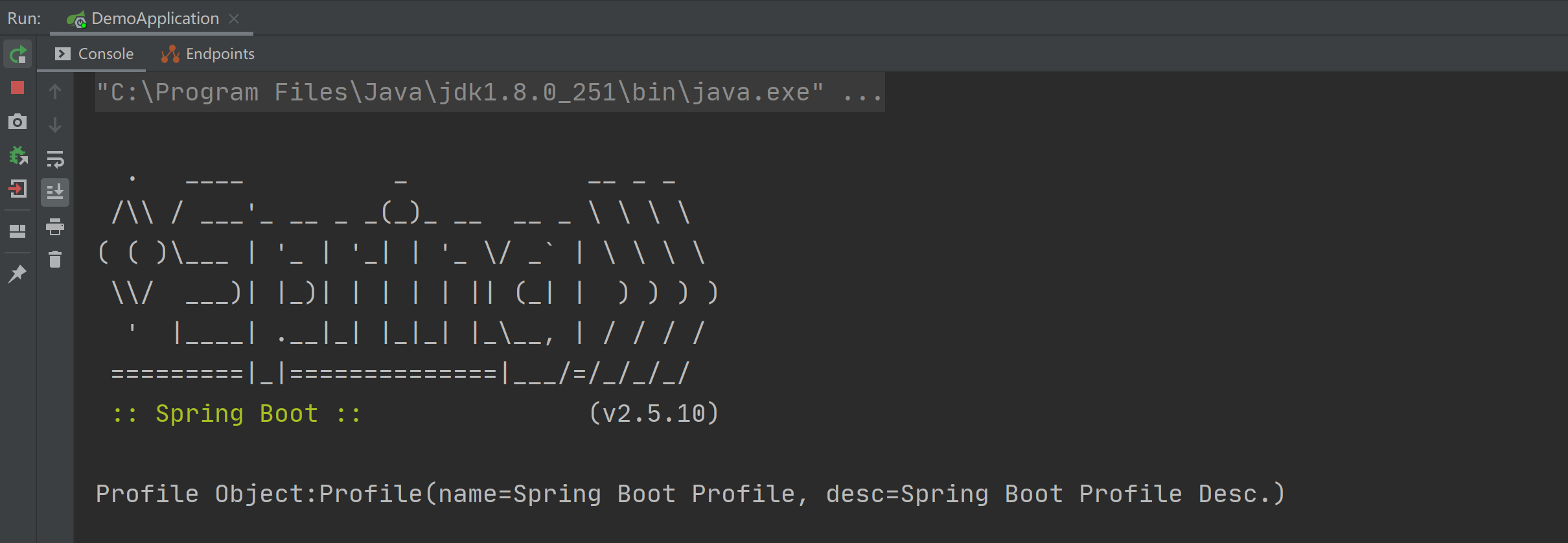
3.使用 Environment 读取配置文件
Environment 是 Spring Core 中的一个用于读取配置文件的类,将此类使用 @Autowired 注入到类中就可以使用它的 getProperty 方法来获取某个配置项的值了,如下代码所示:
import org.springframework.beans.factory.InitializingBean;
import org.springframework.beans.factory.annotation.Autowired;
import org.springframework.boot.SpringApplication;
import org.springframework.boot.autoconfigure.SpringBootApplication;
import org.springframework.core.env.Environment;
@SpringBootApplication
public class DemoApplication implements InitializingBean {
@Autowired
private Environment environment;
public static void main(String[] args) {
SpringApplication.run(DemoApplication.class, args);
}
@Override
public void afterPropertiesSet() throws Exception {
System.out.println("Profile Name:" + environment.getProperty("profile.name"));
}
}
以上程序的执行结果如下图所示:
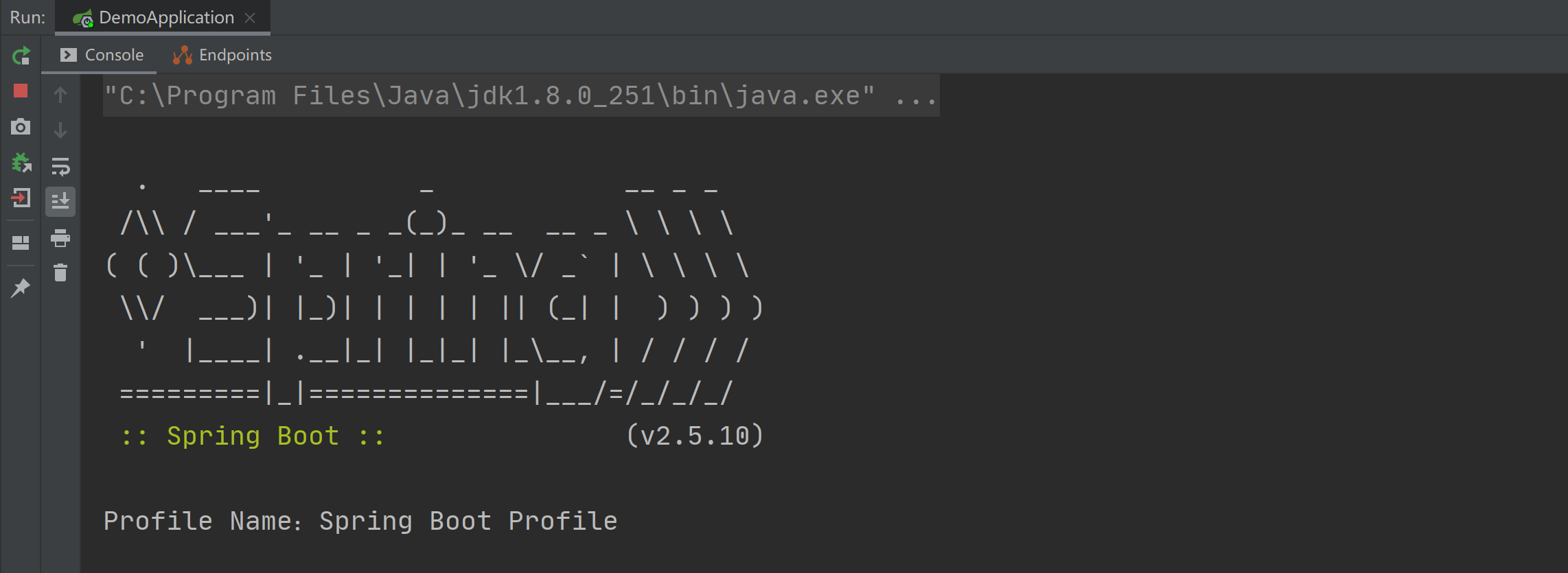
4.使用 @PropertySource 读取配置文件
使用 @PropertySource 注解可以用来指定读取某个配置文件,比如指定读取 application.properties 配置文件的配置内容,具体实现代码如下:
@SpringBootApplication
@PropertySource("classpath:application.properties")
public class DemoApplication implements InitializingBean {
@Value("${profile.name}")
private String name;
public static void main(String[] args) {
SpringApplication.run(DemoApplication.class, args);
}
@Override
public void afterPropertiesSet() throws Exception {
System.out.println("Name:" + name);
}
}
以上程序的执行结果如下图所示:
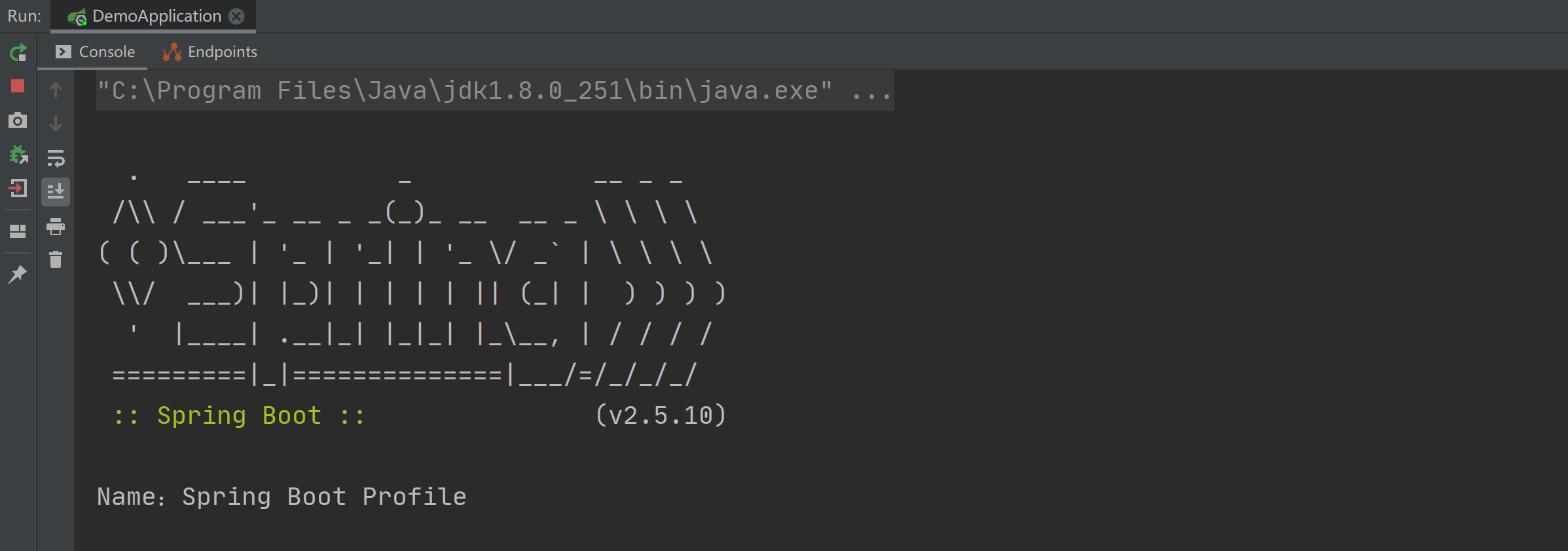
中文乱码
如果配置文件中出现中文乱码的情况,可通过指定编码格式的方式来解决中文乱码的问题,具体实现如下:
@PropertySource(value = "dev.properties", encoding = "utf-8")
注意事项
@PropertySource 注解默认是只支持 properties 格式配置文件的读取的。
5.使用原生方式读取配置文件
我们还可以使用最原始的方式 Properties 对象来读取配置文件,如下代码所示:
import org.springframework.beans.factory.InitializingBean;
import org.springframework.boot.SpringApplication;
import org.springframework.boot.autoconfigure.SpringBootApplication;
import java.io.IOException;
import java.io.InputStreamReader;
import java.nio.charset.StandardCharsets;
import java.util.Properties;
@SpringBootApplication
public class DemoApplication implements InitializingBean {
public static void main(String[] args) {
SpringApplication.run(DemoApplication.class, args);
}
@Override
public void afterPropertiesSet() throws Exception {
Properties props = new Properties();
try {
InputStreamReader inputStreamReader = new InputStreamReader(
this.getClass().getClassLoader().getResourceAsStream("application.properties"),
StandardCharsets.UTF_8);
props.load(inputStreamReader);
} catch (IOException e1) {
System.out.println(e1);
}
System.out.println("Properties Name:" + props.getProperty("profile.name"));
}
}
以上程序的执行结果如下图所示:
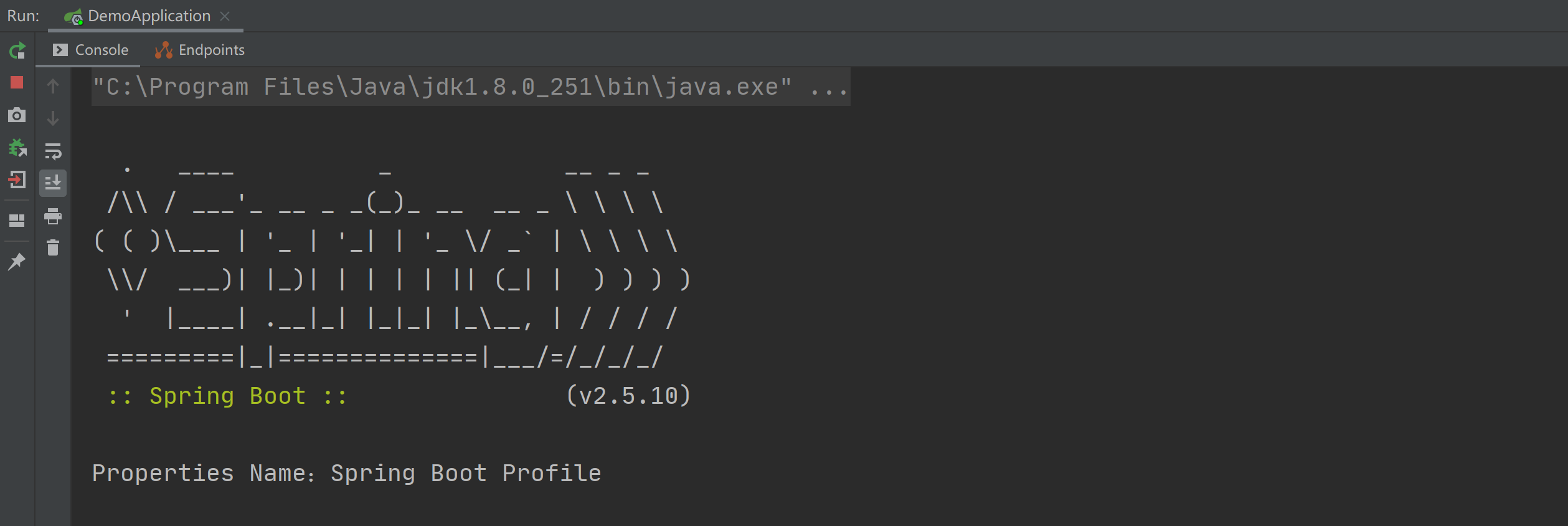
总结
在 Spring Boot 中读取配置文件有以下 5 种方法:
- 使用 @Value 读取配置文件。
- 使用 @ConfigurationProperties 读取配置文件。
- 使用 @PropertySource 读取配置文件。
- 使用 Environment 读取配置文件。
- 使用原生方式读取配置文件。
其中最常用的是前 3 种,如果读取某一个配置项可使用 @Value,如果读取一组配置项可使用 @ConfigurationProperties,如果要指定读取某一个具体的配置文件可使用 @PropertySource 来指定。
是非审之于己,毁誉听之于人,得失安之于数。
公众号:Java面试真题解析
标签:SpringBoot,配置文件,class,name,75,import,public,读取 来源: https://www.cnblogs.com/vipstone/p/16593686.html
本站声明: 1. iCode9 技术分享网(下文简称本站)提供的所有内容,仅供技术学习、探讨和分享; 2. 关于本站的所有留言、评论、转载及引用,纯属内容发起人的个人观点,与本站观点和立场无关; 3. 关于本站的所有言论和文字,纯属内容发起人的个人观点,与本站观点和立场无关; 4. 本站文章均是网友提供,不完全保证技术分享内容的完整性、准确性、时效性、风险性和版权归属;如您发现该文章侵犯了您的权益,可联系我们第一时间进行删除; 5. 本站为非盈利性的个人网站,所有内容不会用来进行牟利,也不会利用任何形式的广告来间接获益,纯粹是为了广大技术爱好者提供技术内容和技术思想的分享性交流网站。
